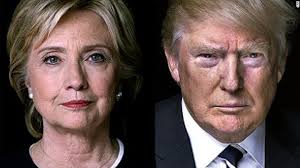The future of our economy and the stability of the biosphere depend on addressing climate change. It is therefore important that voters find out where candidates for the highest office stand on this issue.
Donald Trump
In March, Trump told the Washington Post editorial board “I am not a great believer in man-made climate change.” The Post noted “Trump’s stance on climate change, of course, puts him at odds with the vast majority of the world’s scientists, who agree that climate-warming trends over the past century are likely a result of human activity and are playing out in the form of rising seas, growing carbon dioxide emissions and melting glaciers.”
On Trump’s official “Make America Great Again” website under the section on his positions on the issues, there is no entry on energy policy, much less climate. But we can deduce a few things from those who advise Trump on energy, and from what he has said himself.
Kevin Kramer, (R, N.D) is a two term Congressman, and a public sector commissioner who oversaw the North Dakota fossil energy market boom, and wrote a position paper for the Trump campaign on energy policy. According to David Roberts of Vox, Kramer does not accept climate science. He believes the Earth is cooling, not warming. He would like to repeal Obama’s Clean Power Plan, new methane regulations, the Renewable Fuel Standard, and pull out of the Paris climate agreement.
According to Reuters, Trump is considering appointing Harold Hamm, an oil and gas tycoon from Oklahoma, as Energy Secretary. Hamm has been an unofficial energy advisor to the Trump campaign since at least May.
“Addressing the convention on Wednesday night, Hamm called for expanded drilling and said too much environmental regulation threatened to limit U.S. oil production and increase the country’s dependence on Middle Eastern oil producers.”
Combine this with Trump’s desire to make the coal industry great again and it looks like renewable energy and climate concerns will not even get short shrift under a Trump administration. He tweeted “Obama’s war on coal is killing American jobs, making us more energy dependent on our enemies & creating a great business disadvantage.” By the way, Scientific American judged Trump’s promise to reopen closed coal mines extremely unlikely to ever happen – largely because coal can’t compete with cheap natural gas prices.
Hillary Clinton
In contrast to Trump, Clinton has an extensive page on her website devoted to climate and energy. She says that she will continue to support the Clean Power Plan that Obama has initiated, launch a $60 billion energy challenge to cut carbon pollution and expand clean energy, invest in clean energy infrastructure, innovation, manufacturing and workforce development, and cut billions of tax subsidies oil and gas companies.
Last November Clinton said, “I won’t let anyone take us backward, deny our economy the benefits of harnessing a clean energy future, or force our children to endure the catastrophe that would result from unchecked climate change.”
Nonetheless, Joe Podesta, Clinton’s campaign chairman, says that it is unlikely she would undertake a sweeping reform or a carbon tax, when she takes office. This is because he feels that it is unlikely that the Democrats will control both houses of Congress. Although they would like to see a price on carbon, Podesta told Scientific American that he is more “optimistic about persuading Congress to support more investment in clean energy, more investment in energy efficiency, more investment in research and development.”
American voters have a real choice in presidential candidates and the vision they offer for the energy and environmental future of our country. They will decide with their votes what kind of future we will inhabit.


